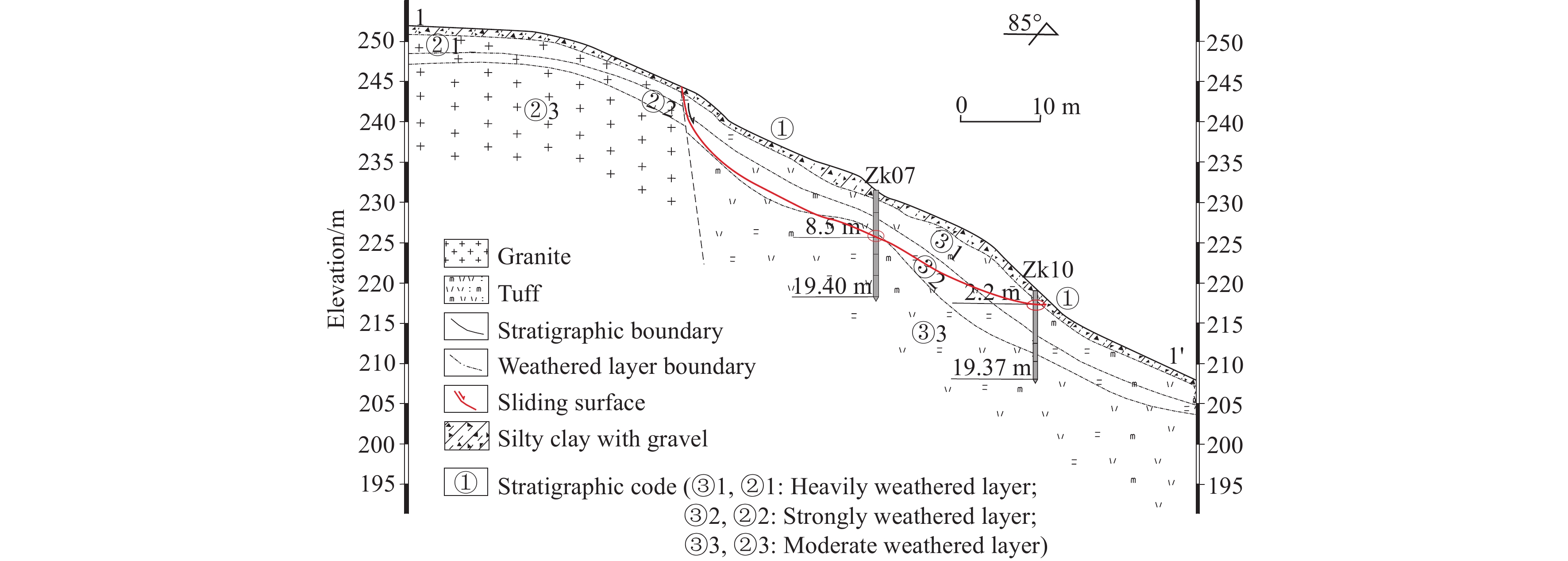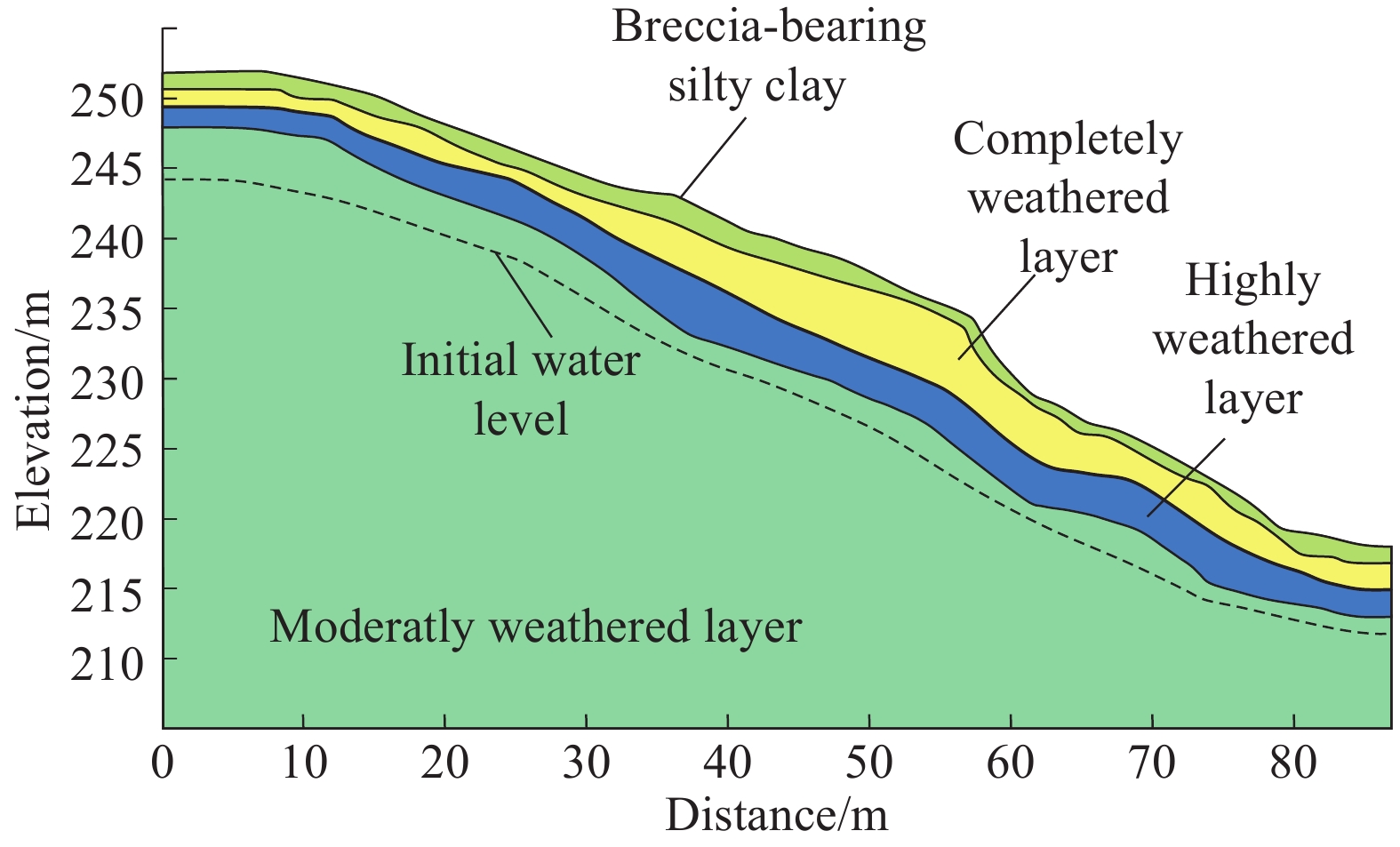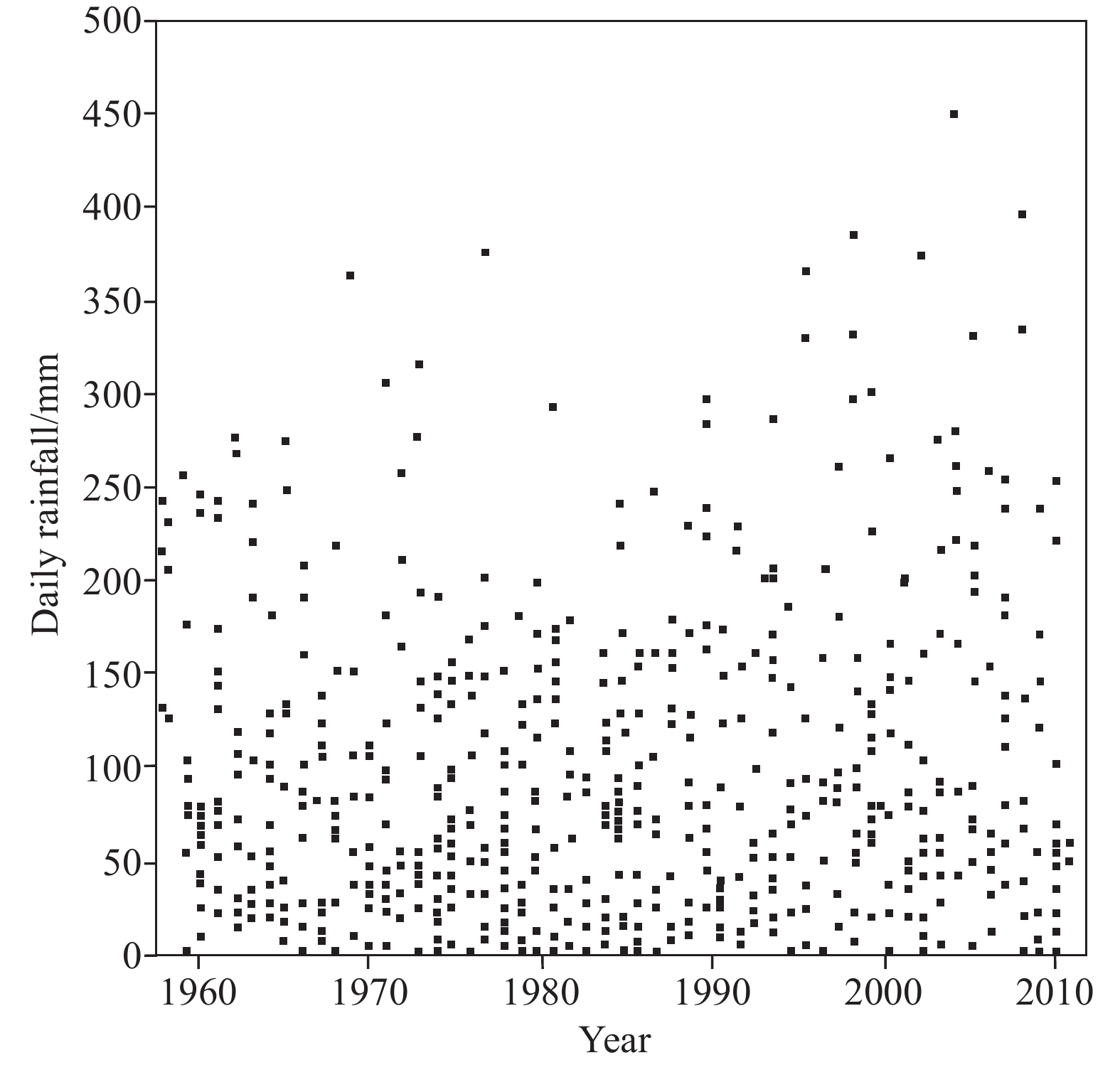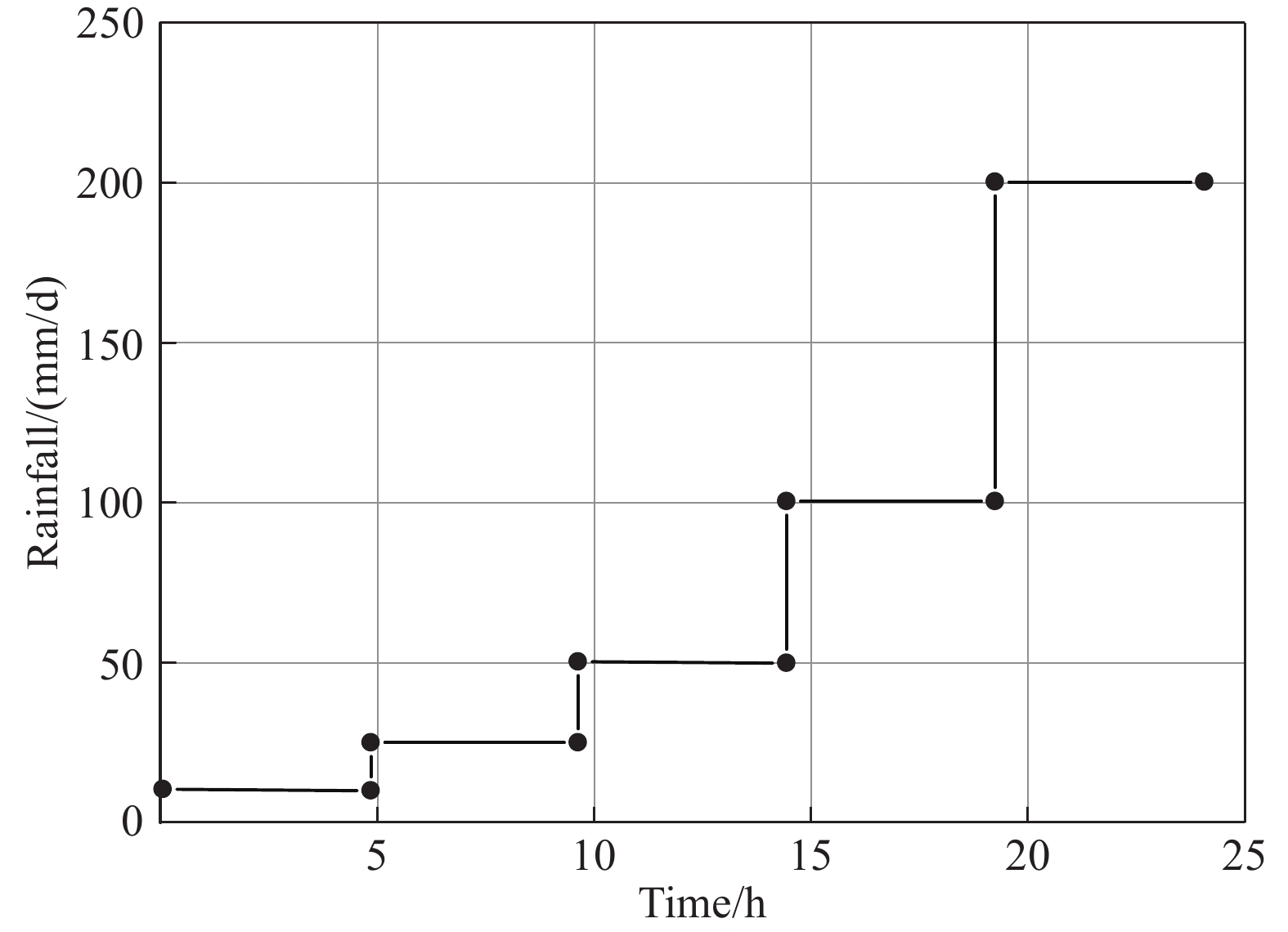| Citation: | Tai-li Zhang, Ai-guo Zhou, Qiang Sun, He-sheng Wang, Jian-bo Wu, Zheng-hua Liu, 2020. Hydrological response characteristics of landslides under typhoon-triggered rainstorm conditions, China Geology, 3, 455-461. doi: 10.31035/cg2020028 |
Hydrological response characteristics of landslides under typhoon-triggered rainstorm conditions
-
Abstract
Many landslide disasters, which tend to result in significant damage, are caused by typhoon-triggered rainstorms. In this case, it is very important to study the dynamic characteristics of the hydrological response of landslide bodies since it enables the early warning and prediction of landslide disasters in typhoon periods. To investigate the dynamic mechanisms of groundwater in a landslide body under typhoon-triggered rainstorm conditions, the authors selected the landslide occurring in Zhonglin Village, Wencheng County, China (also referred to as Zhonglin Village landslide) as a case study. The transient seepage field characteristics of groundwater in the landslide body were simulated with two different rainfall models by using the finite element method (FEM). The research results show that the impact of typhoon-triggered rainstorms on landslides can be divided into three stages: (i) Rapid rise of groundwater level; (ii) infiltration of groundwater from the surface to deeper level, and (iii) surface runoff erosion. Moreover, the infiltration rate of groundwater in the landslide body is mainly affected by the intensity of typhoon-induced rainfall. It can be deduced that higher rainfall intensity leads to a greater potential difference and a higher infiltration rate. The rainfall intensity also determines the development mode of landslide deformation and destruction.
-

-
References
[1] Chen GP. 2011. Study on Distribution Characteristics and Influencing Factors of Slope Geological Hazard Induced by Typhoon in Wenzhou. Chengdu, Chengdu University of Technology, Master’ thesis (in Chinese with English abstract). [2] Chen X, Liu JX. 2007. Analysis on Typhoon Catastrophe in Fujian, taking 200519#“Rongwang” Typhoon as an example. Journal of Quanzhou Normal University (Natural Science), 25(2), 89–90 (in Chinese with English abstract). [3] Han J. 2012. Physical Simulation Study on the Formation Mechanism of Typhoon Landslide in Wenzhou Region. Chendu, Chengdu University of Technology, Master’ thesis (in Chinese with English abstract). [4] Hu XB, Fan XY, Tang JJ. 2019. Accumulation characteristics and energy conversion of high-speed and long-distance landslide on the basis of DEM: A case study of Sanxicun landslide. Journal of Geomechanics, 25(4), 527–534 (in Chinese with English abstract). [5] Iverson RM. 2000. Landslide triggered by rain infiltration. Water Resources Research, 36(7), 1897–191. doi: 10.1029/2000WR900090 [6] Lou WP, Wu LH, Deng SR. 2006. Causes and characteristics of disasters of 0513 Typhoon Tali. Journal of Catastrophology, 21(2), 85–89 (in Chinese with English abstract). [7] Li MB, Chen P, Chen ZH, Fang Q. 2019. Sensitivity zoning of rainfall-induced landslide hazard in Xuefeng Mountain area. Geology and Resources, 28(1), 78–84 (in Chinese with English abstract). [8] Liu LL, Yin KL. 2008. Analysis of rainfall infiltration mechanism of rainstorm landslide. Rock and Soil Mechanics, 29(4), 1061–1066 (in Chinese with English abstract). [9] Qiu WY. 2014. Characteristics of Tropical Cyclone Extreme Precipitation and Its Preliminary Causes in China’s Southeast Coast. Nanjing, Nanjing University of Information Science and Technology, Master’ thesis (in Chinese with English abstract). [10] Qiao YX, Ma ZS, Lü FJ. 2009. Characteristics and dynamic cause mechanism of the Wenchuan Earthquake geological harzards. Geology in China, 36(3), 736–741 (in Chinese with English abstract). [11] Song DY, Zhang MS, Mu HD, Wang W. 2018. Research on the evolution mechanism of deformation and failure of No.13 landslide in the north of Jiaojiayatou. Geological Bulletin of China, 37(7), 1360–1364 (in Chinese with English abstract). [12] Tang MG, Yang H, Xu Q, Fu XL, Zhu Q, Ma XJ. 2019. Permeability and parameters of landslide bodies in Three Gorges Reservoir area. Journal of Engineering Geology, 27(2), 325–332 (in Chinese with English abstract). [13] Tan JM, Dong HG, Chang H, Han HQ, Zhang Y. 2018. Statistical analysis of the geological environment characteristics of landslide development in Qingjiang River Basin. Geology and Mineral Resources of South China, 34(4), 315–322 (in Chinese with English abstract). [14] Wang JY, Wang GL, Shi XY. 2019. Mechanical analysis of apparent dip creep-buckling failure of Shanyang rockslide in Shaanxi Province. Geology in China, 46(2), 381–388 (in Chinese with English abstract). [15] Xiao SC. 2018. Comparison of the landslide stability calculation and landslide stability evaluation method: A case of the cutting slope of a wind farm in Hengdong, Hunan. Hydrogeology & Engineering Geology, 45(3), 159–164 (in Chinese with English abstract). [16] Xie JM, Liu LL, Yin KL. 2003. Study on the threshold valves of rainfall of landslides hazards for early-warning and prediction in Zhejiang province. Geological science and Technology Information, 22(4), 101–105 (in Chinese with English abstract). [17] Yu GQ, Zhang MS, Zhang CH. 2015. Numerical simulation for start-up of landslide based on continuum model. Geological Bulletin of China, 34(11), 2100–2107 (in Chinese with English abstract). [18] Yin YP, Wang WP, Zhang N, Yan JK, Wei YJ, Yang LW. 2017. Long runout geological disaster initiated by the ridge-toprockslide in a strong earthquake area: A case study of the Xinmo landslide in Maoxian County, Sichuan Province. Geology in China, 44(5), 827–841 (in Chinese with English abstract). [19] Yan YJ, Yan YS, Zhao GZ, Zhang TL, Sun Q. 2019. Study on moisture migration in natural slope using high-density electrical resistivity tomography method. Rock and Soil Mechanics, 40(7), 2807–2814 (in Chinese with English abstract). [20] Li YY, Sheng YF, Chai B, Zhang W, Zhang TL, Wang JJ. 2020. Collapse susceptibility assessment using a support vector machine compared with back-propagation and radial basis function neural networks. Geomatics, Natural Hazards and Risk, 11(1), 510–534. doi: 10.1080/19475705.2020.1734101 [21] Zhou CB, Li DQ. 2009. Advances in rainfall-induced landslides mechanism and risk mitigation. Advances in earth science, 24(5), 477–487 (in Chinese with English abstract). [22] Zhang CY, Zhang TL, Zhang M, Sun Q, Wu JB, Wang HS. 2019. Rainfall infiltration characteristics and numerical simulation of slope instability in the basalt residual soil in the coastal area of Southeast China. Hydrogeology & Engineering geology, 46(4), 42–50 (in Chinese with English abstract). [23] Zhang SX, Yang WM, Cheng XJ, Tian Y, Li H, Huang Y. 2017. Genetic mechanism and stability analysis of loess landslides group in Tianshui Hongqishan, Gansu Province. Geology in China, 44(5), 924–937 (in Chinese with English abstract). [24] Zhang W, Li YY, Zhang TL, Gui L, Zhou C. 2019. Remote sensing interpretation of landslide geological hazards in high vegetation coverage area based on hazard sensitivity analysis. Safety and Environmental Engineering, 26(3), 28–35 (in Chinese with English abstract). [25] Zhang M, Yang L, Ren XW, Zhang CY, Zhang TL, Zhang JJ. 2019. Field model experiments to determine mechanisms of rainstorm-induced shallow landslides in the Feiyunjiang River basin, China. Engineering Geology, 262, 1–9. -
Access History

-
Figure 1.
Photos of landslides induced by typhoon-triggered rainstorms.
-
Figure 2.
Geological section of the Zhonglin Village landslide.
-
Figure 3.
Simulation model of layers in Zhonglin Village landslide.
-
Figure 4.
Maximum daily typhoon-triggered rainfall from 1958 to 2012.
-
Figure 5.
Distribution of pore water pressure in the slope at different times during a constant-intensity rainstorm of 200 mm/d.
-
Figure 6.
Periods of successively increasing precipitation.
-
Figure 7.
Distribution of pore water pressure in the slope at different times in the case of successively increasing rainfall.



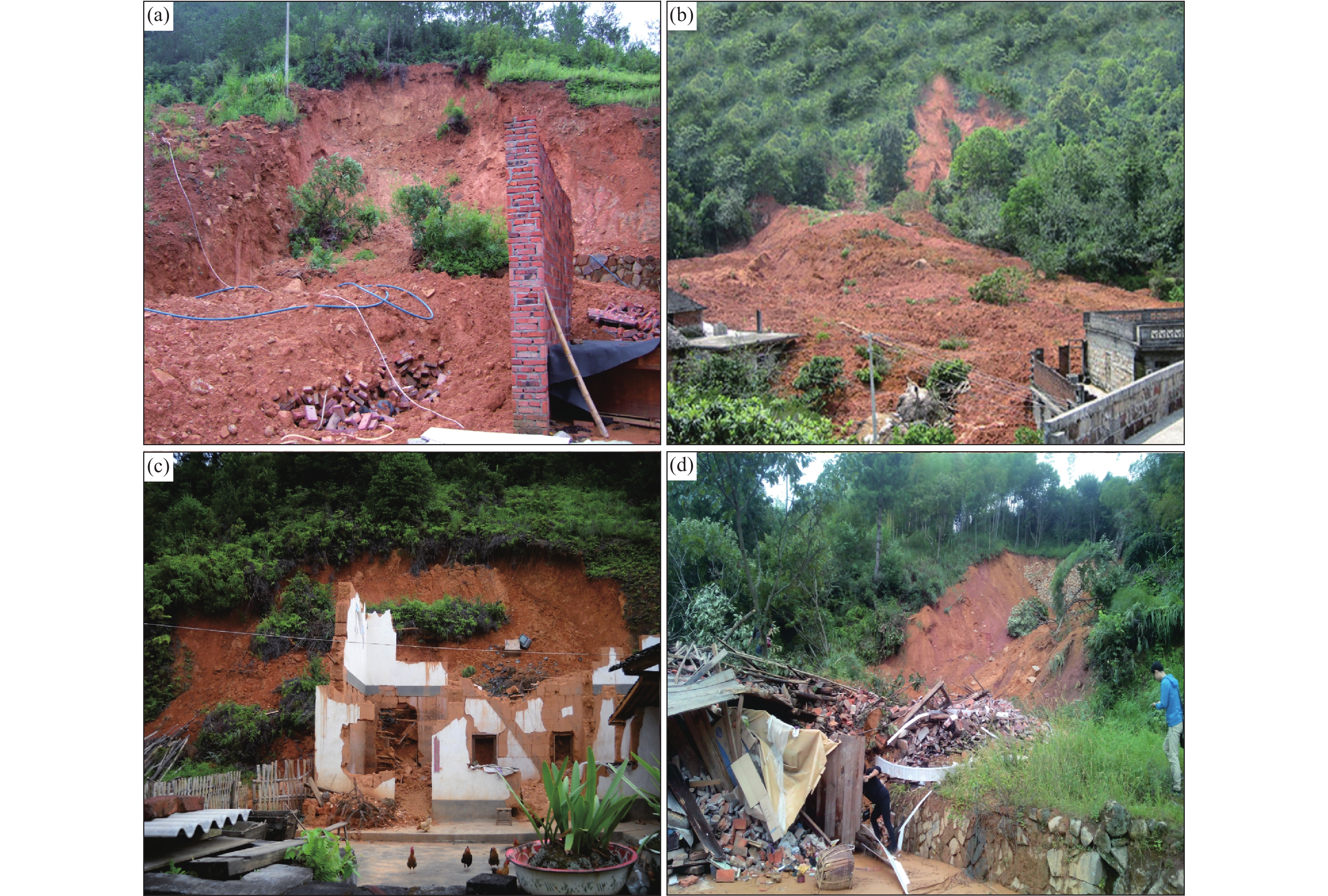

 DownLoad:
DownLoad:
